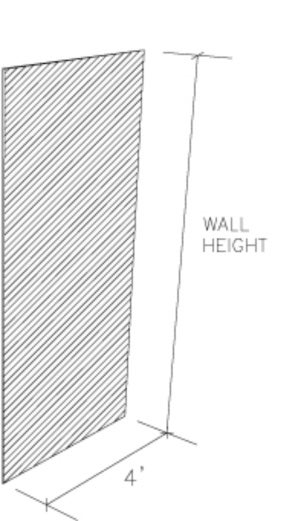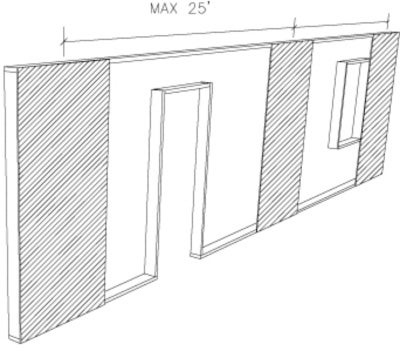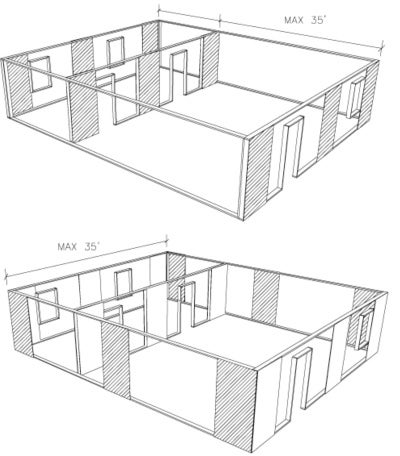This guide details wall bracing requirements for insulating sheathing as per building code and clarifies whether insulation board can be installed in lieu of plywood on the outside on an exterior wall.
Q. Can I install insulation board, in lieu of plywood, on the outside of an exterior wall?
A. For some portion of, or for the entire exterior wall, the answer can be yes, depending on the design. The code provides options for houses that are in wind zones less than 110 mph.
Braced wall panels can be used instead of completely covering the entire building with plywood or OSB. While many types of braced wall panels are acceptable, the most common type of braced wall panels are: 1. A 4 foot wide sheet of plywood or OSB for outside walls and 2. Gypsum installed on interior walls. The various types of braced wall panels are described in Section R602.10.3 Braced wall panel construction methods. Standard braced wall panels need to a full 4 foot width with no cut outs from doors or window opening. Narrower panels can be used if the requirements of Section R602.10.6 Alternate braced wall panels are met.
A braced wall line and is made up of multiple braced wall panels on a wall. The number and location of the braced wall panels on a braced wall line depends on the wind speed, size and shape of the house, and number of stories. At minimum, braced wall panels are required at the corners and every 25 feet along the braced wall line; however the number may be increased depending on the shape and size of the house. This information can be found in Table R602.10.1 Wall bracing. This amount may need to be adjusted based on the weight of the roof assembly. The adjustment factors can be found in Table R301.2.2.2.1 Wall bracing adjustment factors by roof covering dead load.
Every house has multiple braced wall lines running in parallel directions. A braced wall line is commonly required every 35 feet; however there are some exceptions to this rule. Keep in mind that the braced wall lines must run in both directions on a house (front to back and side to side). The number and spacing of braced wall lines is given in Section R602.10.1 Braced wall lines.
Dwellings in wind zones greater than 110 mph are not covered under this section of the International Residential Code. In cases where the window zone is greater than 110 mph, the design and construction of the structural elements must be in accordance with accepted engineering practice (Section R602.10.10 Design of structural elements).
Figure 1: Braced wall panel
Figure 2: Braced wall line
Figure 3: Braced wall lines spaced at 35 feet offsets in both directions
Applicable Code Sections
2006 International Residential Code for One- and Two-Family Dwellings
- R301.2.2.2.1 Weight of materials
- Table R301.2.2.2.1 Wall bracing adjustment factors by roof covering dead load
- R602.3 Design and construction
- R602.10 Wall bracing
- R602.10.1 Braced wall lines
- R602.10.3 Braced wall panel construction methods
- R602.10.10 Design of structural elements
Available Resources
- WFCM 110 mph Guide to Wood Construction in High Wind Areas
- WFCM section 3.4.4.2 Exterior Shear Walls



